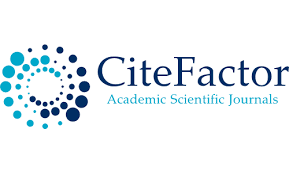Teaching English Grammar to Young Learners Through Clil Method
Keywords:
Grammar, English, CLILAbstract
This paper purposes to describe importance of teaching grammar in English classes as important as other skills, additionally focuses on CLIL method and its implementation while teaching grammar in primary classes. The research was dedicated to gather teachers’ attitude and preferences to use CLIL method in educating grammar in primary classes.
References
Marsh, D., Langé, G. Using Languages to Learn and Learning to Use Languages.
Marsh, D., (2002). CLIL/EMILE. The European dimension. Actions, trends, and foresight potential. Jyväskylä: University of Jyväskylä.
Manzano-Vázquez, B., (2014). Lexical transfer in the written production of a CLIL group and a non-CLILgroup. International Journal of English Studies,14 (2), 57–76. https://doi.org/10.6018/j.166251.
Merino, J. A., & Lasagabaster, D., (2018). The effect of content and language integrated learning programmesintensity on English proficiency: A longitudinal study. International Journal of Applied Linguistics, 28(1), 18–30. https://doi.org/10.1111/ijal.12177.
Coyle, D. (2009). Promoting cultural diversity through intercultural understanding: A case study of CLIL teacher professional development at in-service and pre-service levels. Linguistic Insights – Studies in Language and Communication, 92, 105-124.
What CLIL is and how it can be used in Language Teaching? June 17, 2021 By Sanako Blog. Https://Sanako.Com/What-Clil-Is-And-How-To-Use-It-In-Language-Teaching
Downloads
Published
Issue
Section
License

This work is licensed under a Creative Commons Attribution 4.0 International License.
User Rights
Under the Creative Commons Attribution-NonCommercial 4.0 International (CC-BY-NC), the author (s) and users are free to share (copy, distribute and transmit the contribution).
Rights of Authors
Authors retain the following rights:
1. Copyright and other proprietary rights relating to the article, such as patent rights,
2. the right to use the substance of the article in future works, including lectures and books,
3. the right to reproduce the article for own purposes, provided the copies are not offered for sale,
4. the right to self-archive the article.












